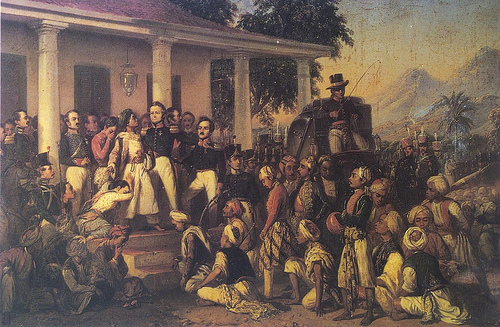Facts About The Arrest of Pangeran Diponegoro
"The Arrest of Pangeran Diponegoro" is a striking 1857 painting by Raden Saleh that captures the dramatic moment when Prince Diponegoro was apprehended by Lieutenant General Hendrik Merkus de Kock in 1830. In the painting, Diponegoro stands resolutely before De Kock, surrounded by a mix of Dutch officers and Javanese figures. Saleh's skillful use of composition and color brings depth to the scene, with finely detailed figures in the foreground and softer, more blurred elements in the background. The painting itself is sizable, measuring 112 by 178 centimeters.
Prince Diponegoro, a member of the Yogyakarta Sultanate, led a fierce rebellion against Dutch colonial rule beginning in 1825. After five grueling years of conflict, he was captured in 1830 and subsequently exiled to Makassar, where he passed away in 1855. Unlike an earlier portrayal by Nicolaas Pieneman that showed Diponegoro as submissive, Saleh's version highlights his defiance.
Raden Saleh completed this powerful work in 1857, drawing inspiration from European history painters and his personal connection to Diponegoro's cause. Initially gifted to the Dutch king, the painting was later sent to Indonesia. Over time, it required restoration due to damage and wear.
This painting is considered an early example of Southeast Asian nationalism in art, subtly challenging Dutch colonial rule. Interpretations of Saleh's intentions vary: some see it as a form of resistance, while others think it reflects a more complex relationship of courtly patronage. Despite differing views, the painting is widely praised for its composition and masterful use of light, although some critics point out minor inconsistencies in the details.
"The Arrest of Pangeran Diponegoro" has left a lasting impact on Indonesian culture, inspiring parodies and stage adaptations. Artists and scholars continue to delve into its symbolism and historical significance, recognizing it as a complex portrayal of power dynamics and colonial resistance.

 Timor Leste
Timor Leste